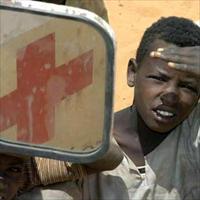KENYA: Violence unabated in Mt Elgon district

Sporadic killings are continuing in western Kenya's Mt Elgon district where a dispute over land ownership sparked violence and widespread displacement of people in 2006.
"Sometimes, at least one person is killed daily, with one or two people being killed per week," Hezborn Wekola, an assistant relief officer with the Kenya Red Cross Society (KRCS) in western Kenya, said on 19 February.
A militia called Sabaot Land Defense Forces (SLDF) had been blamed for most of the killing. The motive of the group is reportedly to seek redress for alleged injustice during land distribution in the Chebyuk settlement scheme.
By the end of 2007, at least 45,000 people had been displaced by intra-clan fighting, which mainly pits rival clans of the Sabaot community.
"Three days ago some livestock was stolen by militias alleged to belong to the SLDF in [neighbouring] Bungoma West District, with some families also being threatened," Wekola said.
Wekola said displaced people were desperate because they were no longer able to run businesses or grow food on their farms.
He said the displaced people wanted to be relocated to other areas if security in their home areas could not be guaranteed.
"If this goes on it will no longer be about fighting for land but for survival," he said.
In the Chepkitale area of the district, schools remained closed as fighting continues in the nearby Endebess area, according to a local teacher, Sokwony Laikong.
"Children who qualified for form one [high school] have not reported to school," Laikong said.
Moreover, he said, some key roads have been closed by militiamen so people were unable to go to important market areas such as Chepkitale. Most people in the district are subsistence farmers, deriving their livelihoods from the sale of food crops, livestock and milk.
"If there is no market there is no cash so the people cannot afford to pay school fees," said Laikong.
"Our security is at the mercy of the militia," he said. The militias seemed to be taking advantage of the redeployment of security officers to other parts of the country to deal with the post-election violence, according to a survivor of a militia attack who was rescued by the police.
"Right now I am living in one of the police stations after being separated from my three children," said the survivor, who asked not to be named.
Peace initiatives
In spite of the insecurity, some peace initiatives in Mt Elgon by humanitarian organisations, local political and spiritual leaders and some former militiamen have made headway.
Some of the militias were asking for seeds and fertilisers to resume work on their farms, Wekola of KRCS said. Young people had also expressed interest in sport activities, he added.
Meanwhile, the number of people displaced in western Kenya due to the post-election violence stood at 15,571, sheltered in 15 camps.
The camps are spread out in the districts of Bungoma East, West, and North, Teso, Mumias, Kwanza and Lugari. More internally displaced persons (IDPs), mainly from the border towns of Malaba and Busia, were camped in Tororo in neighbouring Uganda.
At the height of the poll-related crisis in January, there were 19,000 IDPs in 19 camps in the region, according to Wekola.
The displacement has put a strain on schools, with classrooms in some primary schools in Endebess having to accommodate as many as 190 pupils, he said.
Relief agencies in the region are providing the displaced with food and non-food items in addition to erecting makeshift schools in some of the camps to deal with the large number of pupils.
The IDPs were also receiving counselling from the National Council of Churches of Kenya, according to the organisation's coordinator for the western region, Florence Makhanu.
"There is a need for land reform to correct historical injustices," Makhanu said.
She claimed the district had been marginalised for a long time and lacked the infrastructure that would enable people to diversify their livelihoods and reduce dependence on land, which was becoming more scarce as the population rose.
"Mt Elgon is a reflection of the country. If we had taken this [the Mt Elgon crisis] as a case study then maybe it would have helped solve the current crisis in the country," she added.
 Back and Next - Back and Next
Back and Next - Back and Next See Also - See Also
See Also - See Also